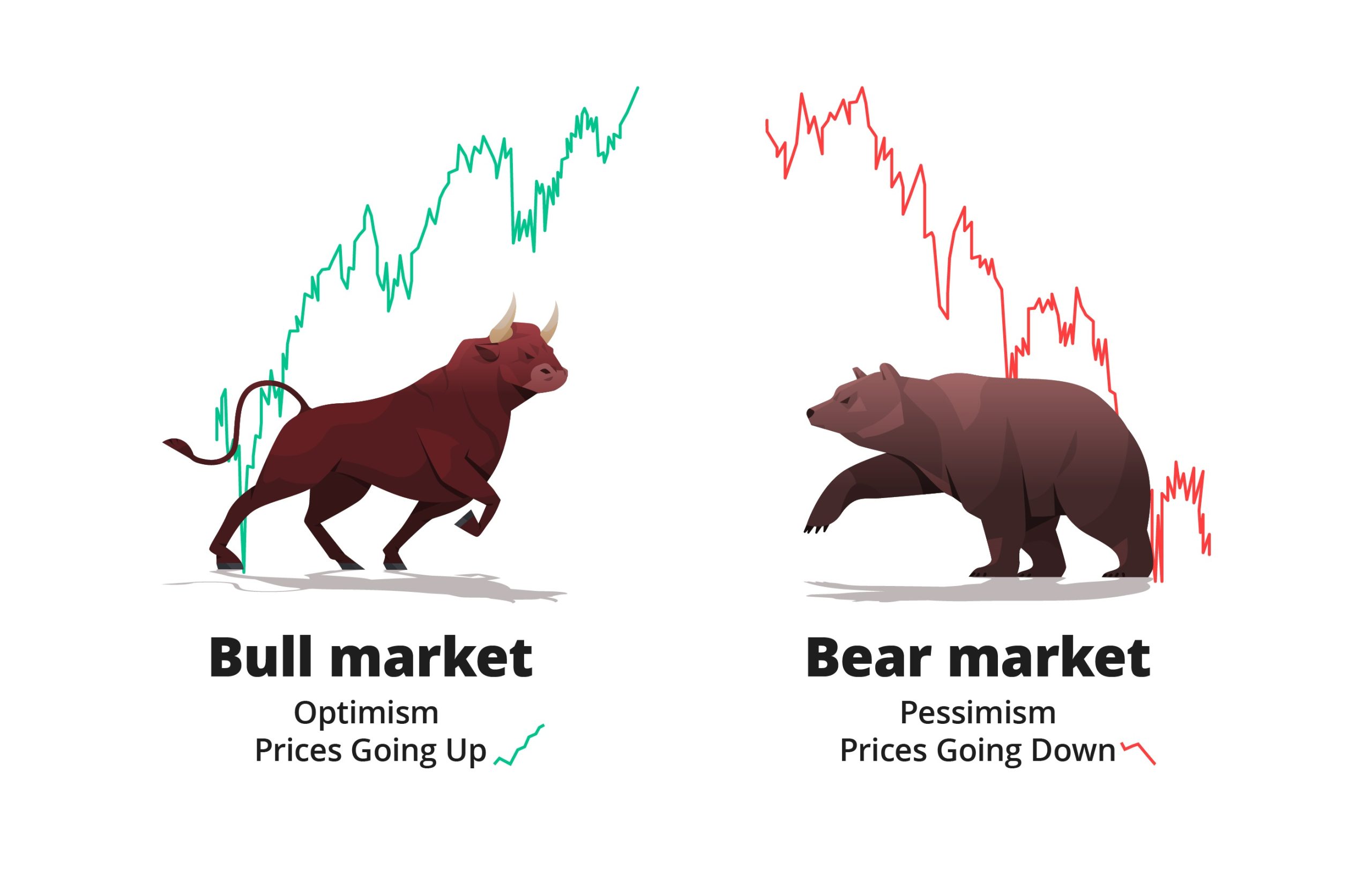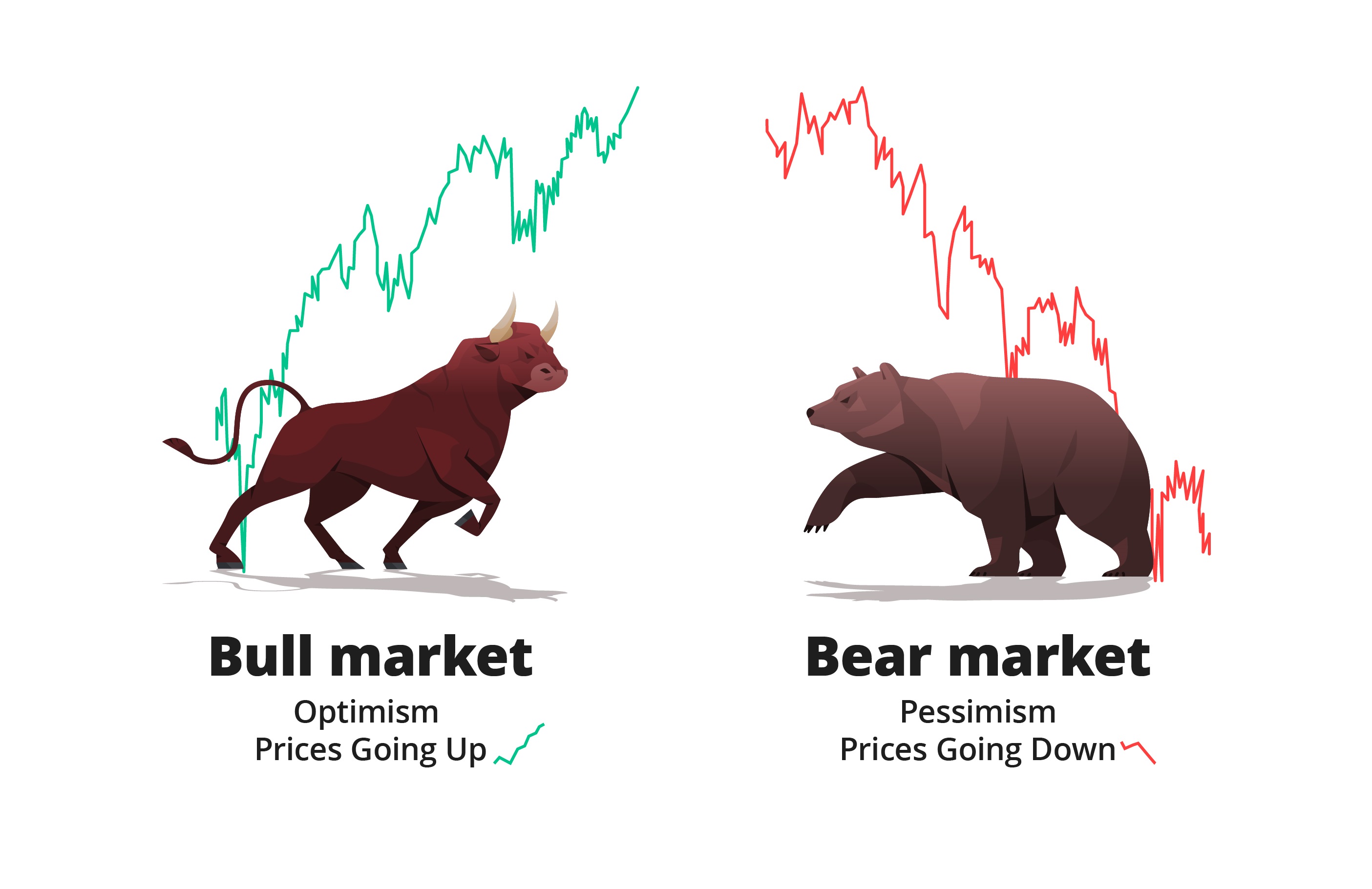
Investing in a Bear Market: Unlocking Opportunities Amidst the Storm
The phrase "bear market" often strikes fear into the hearts of investors, conjuring images of plummeting portfolios, economic uncertainty, and financial distress. It’s natural to feel anxious when the stock market is in decline. However, experienced investors often view bear markets not just as periods of risk, but as unique windows of opportunity.
While the immediate urge might be to panic sell and retreat, a well-informed and strategic approach can turn a challenging market environment into a foundation for significant long-term growth. This comprehensive guide will demystify investing in a bear market, exploring both the potential rewards and the inherent dangers, all in language that’s easy for beginners to understand.
What Exactly Is a Bear Market?
Before diving into strategies, let’s define what we’re talking about.
A bear market is generally characterized by a prolonged period of falling stock prices, typically when the market as a whole drops 20% or more from its recent peak. This isn’t just a bad day or week on the stock market; it signifies a widespread sentiment of pessimism and declining investor confidence, often accompanied by:
- Economic Slowdown: Concerns about recessions, high unemployment, or declining corporate profits.
- Falling Asset Values: Not just stocks, but sometimes other assets like real estate can also see price declines.
- Increased Volatility: Wild swings in stock prices become more common.
- Negative News Cycle: Media coverage tends to focus on bad economic news, further fueling anxiety.
Think of a bear market as the opposite of a "bull market," which signifies a period of rising prices and optimism. The "bear" metaphor comes from the way a bear swipes its paws downwards.
Why Bear Markets Scare Us (And Why They Shouldn’t Paralyze Us)
The fear associated with bear markets is entirely understandable. Watching your hard-earned money seemingly evaporate can be incredibly stressful. This fear often leads to:
- Panic Selling: Selling investments at a loss to stop the bleeding, often locking in those losses.
- Hesitation to Invest: Being too scared to buy, missing out on potential recovery.
- Emotional Decisions: Letting fear dictate financial choices rather than logic and strategy.
However, history offers a powerful counter-narrative: every bear market has eventually been followed by a recovery and new highs. While the timing is unpredictable, the market’s long-term trend has always been upward. Understanding this historical context is crucial for maintaining a rational perspective.
The Hidden Opportunities in a Bear Market
While risks are present, a bear market presents several unique opportunities for long-term investors:
1. "Stocks Are On Sale" – Value Investing
Imagine your favorite store having a huge clearance sale. That’s essentially what happens in a bear market for stocks. High-quality companies, with strong fundamentals and solid business models, often see their stock prices drop significantly, sometimes far below their true worth.
- The Opportunity: You can buy shares of excellent companies at a steep discount. This is the essence of value investing – finding great companies at bargain prices. When the market recovers, the potential for significant capital appreciation (your investment growing in value) is much higher.
2. Dollar-Cost Averaging (DCA) Becomes More Powerful
Dollar-Cost Averaging (DCA) is a strategy where you invest a fixed amount of money at regular intervals (e.g., $100 every month), regardless of the stock price.
- How it Works in a Bear Market: When prices are falling, your fixed investment buys more shares each time. When prices are low, you’re accumulating a larger number of shares. When the market eventually recovers, all those extra shares you bought at cheaper prices contribute significantly to your overall returns. DCA helps remove emotion from investing and capitalizes on lower prices naturally.
3. Laying the Groundwork for Long-Term Growth
Bear markets are temporary setbacks, but long-term growth is the ultimate goal for most investors.
- The Opportunity: By investing during a downturn, you’re positioning your portfolio for maximum upside when the inevitable recovery begins. Those who buy during the lows often see the most substantial gains when the bull market returns. It’s like planting seeds during winter for a bountiful harvest in spring.
4. Rebalancing Your Portfolio
A bear market can be an excellent time to re-evaluate and rebalance your investment portfolio.
- The Opportunity: As some assets fall more than others, your desired asset allocation (e.g., 60% stocks, 40% bonds) might get out of whack. A downturn allows you to trim assets that may still be relatively high (if any) and add to those that have fallen significantly, bringing your portfolio back to your target risk level and potentially increasing future returns.
5. Discovering New Investments and Strategies
The stress of a bear market can also prompt investors to research and learn more, potentially discovering new investment avenues or refining their strategies.
- The Opportunity: You might explore defensive sectors, dividend stocks, or even alternative investments you hadn’t considered before. This period of challenge can lead to greater financial literacy and a more robust long-term plan.
Specific Investment Strategies for a Bear Market
While no strategy guarantees success, some approaches tend to be more resilient or opportunistic during market downturns:
1. Focus on Quality and "Blue-Chip" Companies
- What it means: These are large, well-established companies with a long history of stable earnings, strong balance sheets, and often, a dominant position in their industry. Think of companies like Apple, Microsoft, Johnson & Johnson, or Coca-Cola.
- Why it works: They are more likely to weather economic storms, continue generating revenue, and recover faster than smaller, riskier companies. Their shares might drop, but their underlying business strength remains.
2. Defensive Stocks
- What it means: These are companies that provide essential goods and services that people need regardless of the economic climate.
- Utilities: Electricity, gas, water providers.
- Consumer Staples: Food, beverages, household products (e.g., Procter & Gamble, PepsiCo).
- Healthcare: Pharmaceuticals, medical devices (people still get sick).
- Why it works: Demand for their products/services tends to be relatively stable, making their earnings more predictable and their stock prices less volatile during downturns.
3. Dividend Stocks
- What it means: Companies that regularly pay out a portion of their profits to shareholders in the form of dividends.
- Why it works: Even if the stock price is falling, you’re still receiving income. This can provide a psychological boost and a tangible return. Many blue-chip and defensive companies are also reliable dividend payers. Reinvesting these dividends (buying more shares) can accelerate your recovery when the market turns.
4. Fixed-Income Investments (Bonds, CDs)
- What it means: These are generally considered safer than stocks.
- Bonds: You lend money to a government or corporation and receive regular interest payments, with your principal returned at maturity.
- Certificates of Deposit (CDs): Savings accounts that hold a fixed amount of money for a fixed period, earning a fixed interest rate.
- Why it works: They can provide stability and income during a stock market decline. When stock markets are volatile, investors often flock to bonds, which can sometimes even see their prices rise, providing a hedge against stock losses. Interest rates on savings accounts and CDs might also become more attractive during periods of economic uncertainty.
5. Consider Alternative Investments (with caution)
- Gold and Precious Metals: Often seen as a "safe haven" asset during times of economic uncertainty and inflation. Their price may rise when stocks fall.
- Real Estate (if liquid and timing is right): Property values can also fall in a recession, potentially offering buying opportunities for long-term investors, but real estate is far less liquid than stocks and involves significant transaction costs.
The Risks of Investing in a Bear Market
While opportunities abound, it’s crucial to acknowledge the significant risks involved:
1. Further Declines (Catching a Falling Knife)
- The Risk: No one knows how low the market will go or how long the bear market will last. Investing too heavily too early might mean your investments continue to fall, leading to further paper losses. Trying to "time the bottom" is incredibly difficult, even for professionals.
2. Emotional Decisions and Panic
- The Risk: Despite the best intentions, sustained losses can lead to panic. Investors might sell out of fear, locking in losses, or become too afraid to buy, missing the recovery. Emotional investing is often detrimental to long-term wealth.
3. Liquidity Issues
- The Risk: If you invest money that you might need in the short term (e.g., for an emergency, a down payment), and the market is down, you might be forced to sell your investments at a loss to access your cash. Never invest money you can’t afford to lose or won’t need for several years.
4. Company Bankruptcies and Defaults
- The Risk: Not all companies survive a severe economic downturn. Weaker businesses, especially those with high debt or unsustainable business models, might go bankrupt, leading to a complete loss of your investment in that company’s stock or bonds. This is why focusing on quality is so important.
5. Prolonged Downturns
- The Risk: While all bear markets eventually recover, some can last for many months or even a few years. This requires patience and conviction, as your portfolio might remain "underwater" for an extended period.
Essential Rules for Navigating a Bear Market
To maximize opportunities and minimize risks, keep these fundamental principles in mind:
- 1. Don’t Panic: This is the golden rule. Emotional decisions are almost always bad decisions in investing. Stick to your long-term plan.
- 2. Have an Emergency Fund: Before investing anything, ensure you have 3-6 months (or more) of living expenses saved in an easily accessible, low-risk account. This prevents you from being forced to sell investments during a downturn.
- 3. Understand Your Risk Tolerance: How much volatility can you truly stomach? If watching your portfolio drop significantly causes you sleepless nights, your current investment mix might be too aggressive. Adjust your allocation (e.g., more bonds, less stock) if necessary.
- 4. Diversify, Diversify, Diversify: Don’t put all your eggs in one basket. Spread your investments across different companies, industries, asset classes (stocks, bonds, real estate), and even geographies. Diversification helps cushion the blow if one part of your portfolio performs poorly.
- 5. Focus on the Long Term: Bear markets are a normal, albeit uncomfortable, part of the investing cycle. Successful investors keep their eyes on the prize: long-term wealth creation over decades, not months or years.
- 6. Stay Informed, But Avoid the Noise: Read reputable financial news, but don’t get caught up in daily sensationalism or doomsaying. Focus on the underlying fundamentals of the economy and the companies you invest in.
- 7. Consult a Financial Advisor: If you’re unsure or overwhelmed, a qualified financial advisor can help you assess your situation, understand your risk tolerance, and create a personalized investment plan that aligns with your goals.
Conclusion
Investing in a bear market is not for the faint of heart, but it is a critical skill for anyone serious about building long-term wealth. While the immediate impulse is often to flee, periods of market decline historically offer some of the best buying opportunities.
By understanding what a bear market is, recognizing its inherent risks, and strategically capitalizing on the opportunities it presents through methods like dollar-cost averaging and focusing on quality assets, you can transform a period of fear into a foundation for future financial success. Remember to stay calm, remain diversified, focus on the long term, and never invest money you can’t afford to lose. The bear market might be roaring now, but with patience and a well-thought-out strategy, you can emerge stronger on the other side.
Meta Description Suggestion: Learn how to navigate a bear market with confidence! Discover the opportunities and risks of investing during a market downturn, with beginner-friendly strategies like dollar-cost averaging and focusing on quality stocks. Plan for long-term growth.




Post Comment